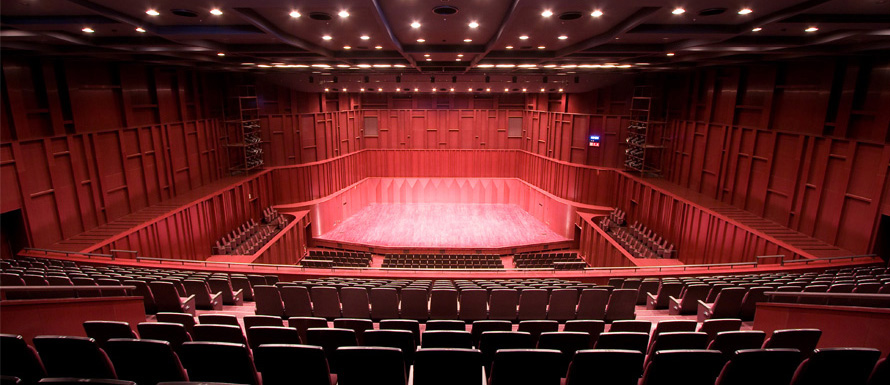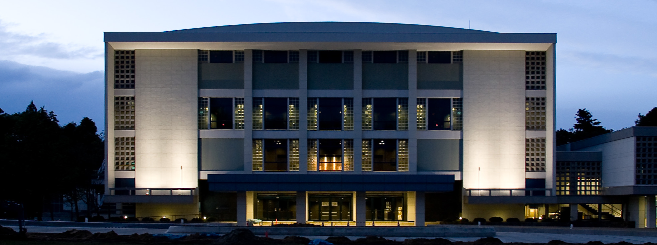Architectural Plan
Professor Yasuaki ONODA
Architecture and Building Science
School of Engineering
This project started as the core project of Tohoku University's Centenary Project. It was a renovation, using the latest technology, of the University's Memorial Auditorium (the university's 50th anniversary building) and Matsushita Hall. Both buildings had been falling into disuse as they aged. The goal of the project was to disseminate the status of Tohoku University, both domestically and internationally, and so build up a new spiritual pillar for students, alumni and faculty, while making the new facilities a base for interaction with the local community.
Plan
Originally, the facility had been considered as a university museum. However, after taking into account such elements as the potential social impact, the status of similar facilities, the potential matching with the existing structures, various legal constraints and the results of a simulation regarding the operating costs versus benefits, the university reached the conclusion that an international venue would be desired, incorporating the element of a concert hall.
There were three remarkable factors in making this hall. First, the architect Hitoshi Abe (an internationally active alumnus, currently head of the urban design department at UCLA) was commissioned to produce the basic concept and design supervision. This commission enabled the University to invest on a reasonable scale while introducing an excellent design for maximal impact. Secondly, because a typical university auditorium has limited uses, the Hall was designed as a familiar and outstanding performance facility, suitable for a university that had turned to an independent administrative corporation. Thirdly, from the project’s early stages, the management had been taken into consideration for thorough planning.
Architecture
On the exterior, the original forms of the Memorial Auditorium and Matsushita Hall were preserved and restored as much as possible. While demonstrating such respect for the historical, the interior was modified for necessary functions, with extreme scrutiny on costs. Remarkable technical elements are as follows.
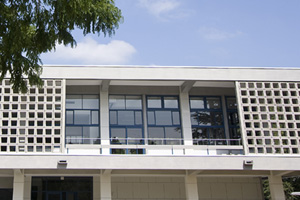
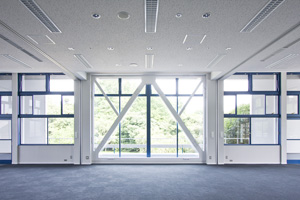
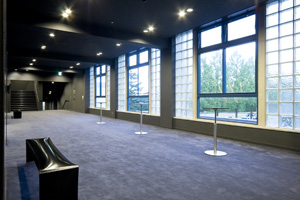
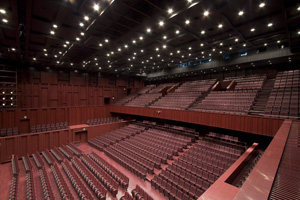
Architectural Design
Together with the daring use of shoebox format, capable of realizing the most beautiful reverberations, the University's color symbol was introduced to enhance the uniquely calming interior. Around the foyer, in order to smoothly connect the hall to the rich greenery of the exterior surroundings, a darker color tone was employed and several different materials were combined to convey dignity.
Structural Design
There are numerous ingenious elements throughout the building. For instance, reinforcements were introduced at points where the existing structure could be utilized. These earthquake-resistant reinforcements are not visible from outside. Furthermore, new separation walls for sound insulation were placed with consideration for the limited design load which the structure permitted. These elements were introduced in managing conditions such as beams in the upper part of the hall being riveted with technology from 50 years ago.
Environmental Design
The facility was updated to feature four modes; air conditioning, heating, cooling and dehumidification. Achieving these modes in keeping with Noise Criterion 15 for air-conditioning noise, it is a very sophisticated environment—equivalent in this respect to a first class concert hall.
Acoustic Design
Maximally appropriate architectural acoustics were developed by using an acoustic design from the hybrid auralization system of the SUZUKI Yoichi Laboratory, Research Institute for Electrical Communication, Tohoku University.
Project Management
The planning and architecture have been realized thanks to the combined efforts of construction JV and the architect's office, as well as the sophisticated leadership and responsibility of project management provided by the Tohoku University Research and Education Foundation.
